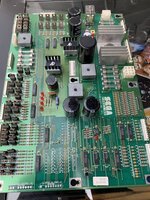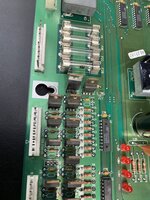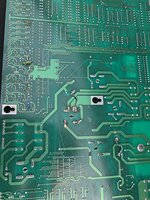So picked up the Sega SW from south coast which wasn’t booting. Going thru wiring and connections before attempting to turn on and found some missing and loose ( poorly soldered) components on the power board, once removed found some dodgy repair work and ‘chicken ****’ soldering. I’m only just starting to do board work, removing and replacing resistors so far, so have a few questions...1. What causes the failures that have led to these ‘repairs’, 2. if I swap in a working power board from my starship troopers will it be damaged, 3. would the damaged board be repairable. 4 And also the ‘bridged wires’ .. why and where to?





